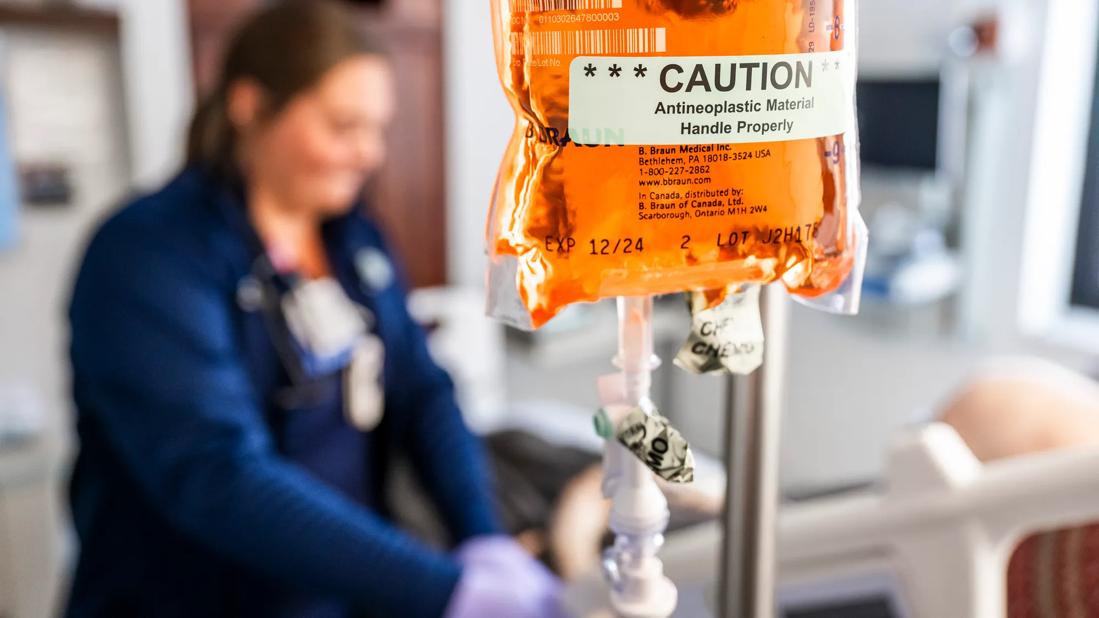Postsurgery chemo for certain head and neck cancers

As Americans live longer, they are more likely to be diagnosed with cancer in their later years. Physicians treating elderly cancer patients are now faced with the difficult decision of weighing aggressive treatments against the frailty of this population.
Advertisement
Cleveland Clinic is a non-profit academic medical center. Advertising on our site helps support our mission. We do not endorse non-Cleveland Clinic products or services. Policy
A recent Cleveland Clinic-led retrospective study examined outcomes for elderly patients with locally advanced squamous cell carcinoma of the head and neck who were treated with the gold standard, aggressive treatment: the application of adjuvant radiation therapy (RT) and concurrent chemotherapy after surgical resection.
Two phase three studies published in 2004 defined the role of adjuvant chemoradiotherapy (CRT) for patients with resected squamous cell carcinomas of the head, but only a small percentage of patients in those studies were elderly.
“We chose to do this study because this is an area where we have to think carefully on a day-to-day basis for our patients,” says Neil Woody, MD, associate staff in the Department of Radiation Oncology. “‘Am I best serving them by adding another toxic drug to their treatment after they’ve gone through surgery to try and increase their cure rate? Or am I simply adding so many side effects that I’m actually going to reduce their overall outcome?”
Using National Cancer Database (NCDB) records from 2004-2012, Dr. Woody and his colleagues identified patients who were 70 years or older and had invasive squamous cell carcinoma involving the mucosal lip, sites of the oral cavity, oropharynx, larynx and hypopharynx.
In particular, they looked for patients with identified extracapsular extension (ECE) or positive margins; the 2004 studies showed that younger patients with those pathological characteristics had an association with improved overall survival (OS) when they received adjuvant concurrent CRT with cisplatin.
Advertisement
They found that 187 of the elderly patients (42 percent) with ECE or positive margin received CRT, and that the utilization of CRT in the elderly with ECE or positive margins increased over the course of the study period.
After adjusting for a range of other covariates, the researchers found the use of concurrent chemotherapy was associated with a statistically significant improvement in OS for elderly patients.
“Understandably, there is careful consideration and perhaps even hesitation to add chemotherapy to the course of radiation in these elderly patients for concern of doing more harm than good,” says Jessica Geiger, MD, associate staff in the Department of Hematology and Medical Oncology and an author on the study. “These patients often have other health issues and medical conditions that put them at higher risk of complications and toxicities from cancer treatment and are often excluded from such clinical trials. Moreover, in this analysis, these patients are recovering from an extensive surgery.
“Yet, the results of this analysis suggest otherwise,” she says. “Elderly patients not only tolerate concurrent chemoradiotherapy, they also live longer compared to patients who receive postoperative radiation alone.”
The investigators hope the study will be useful to physicians around the country who are treating elderly patients with head and neck cancers.
“Given the age of these patients, there’s a reluctance amongst many to offer such therapies, “ says Eric Lamarre, MD, associate staff in the Head and Neck Institute who was also a study author . “So it’s useful to identify the ongoing national trends of adjuvant treatment in this group and to describe the benefits of the treatment in those that can tolerate it.”
Advertisement
Adds Dr. Woody, “This study does not prove every elderly patient in this setting will benefit from chemotherapy, but it does give us information that helps us to make good individual decisions for our patients to try to maximize cure rates.”
Photo Credit: ©Russell Lee
Advertisement
Advertisement

Obstructing key protein allows for increased treatment uptake for taxane chemotherapy

Oral medication reduces epistaxis and improves quality of life for patients with rare vascular disorder

Findings could help with management of a common, dose-limiting side effect

Enfortumab vedotin plus pembrolizumab benefited patients, regardless of biomarker expression

Treatment involved checkpoint inhibitor, surgery and intravesical therapy

Researchers Assess Real-Life Experiences of Patients Treated Outside of Clinical Trials

Multi-specialty coordination essential for improving quality of life